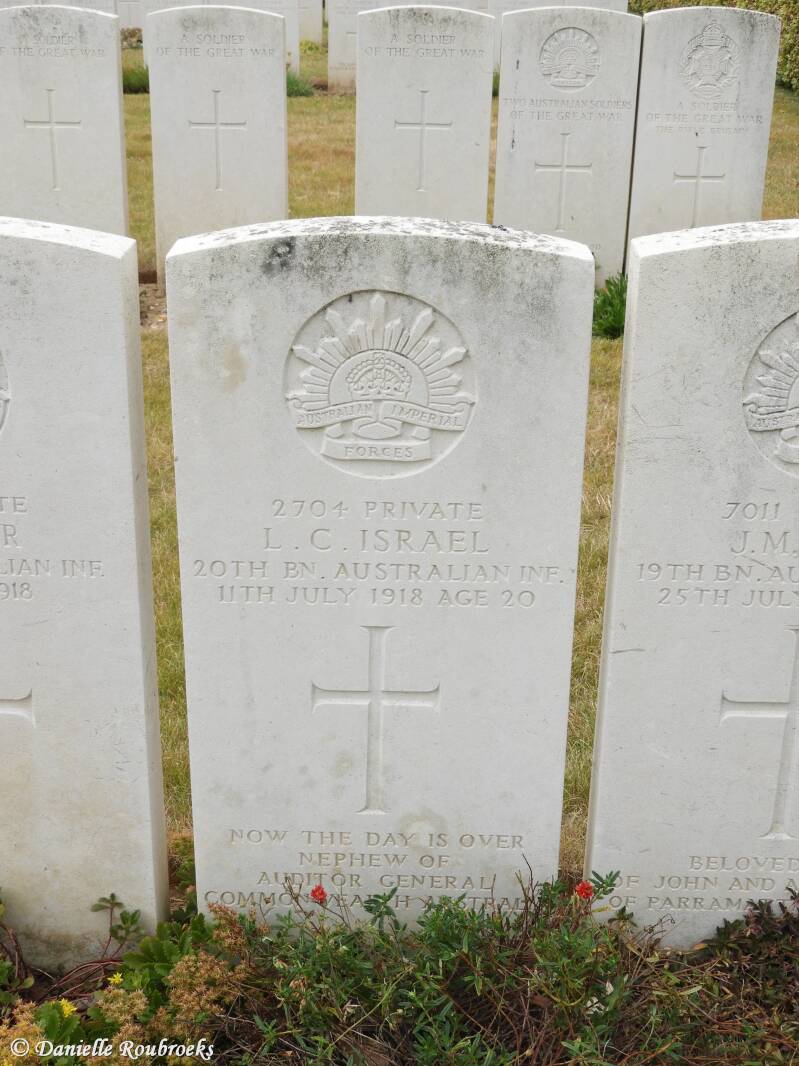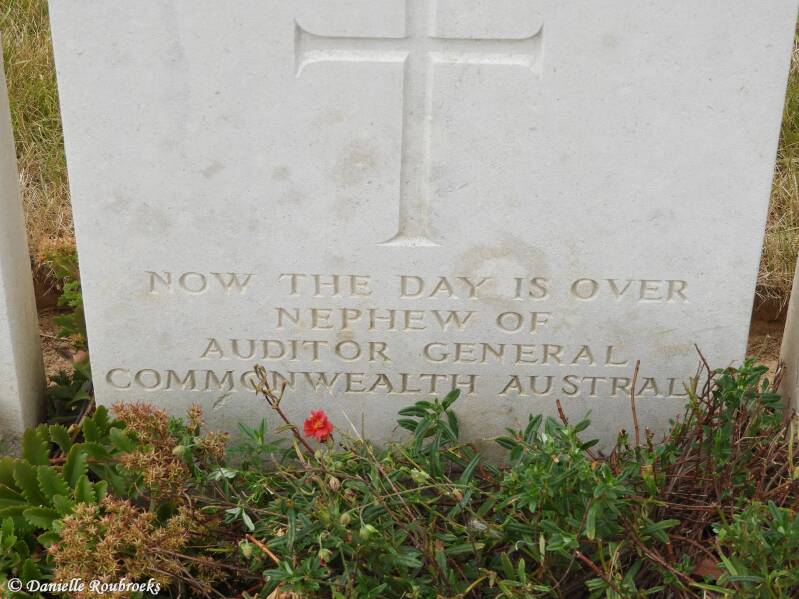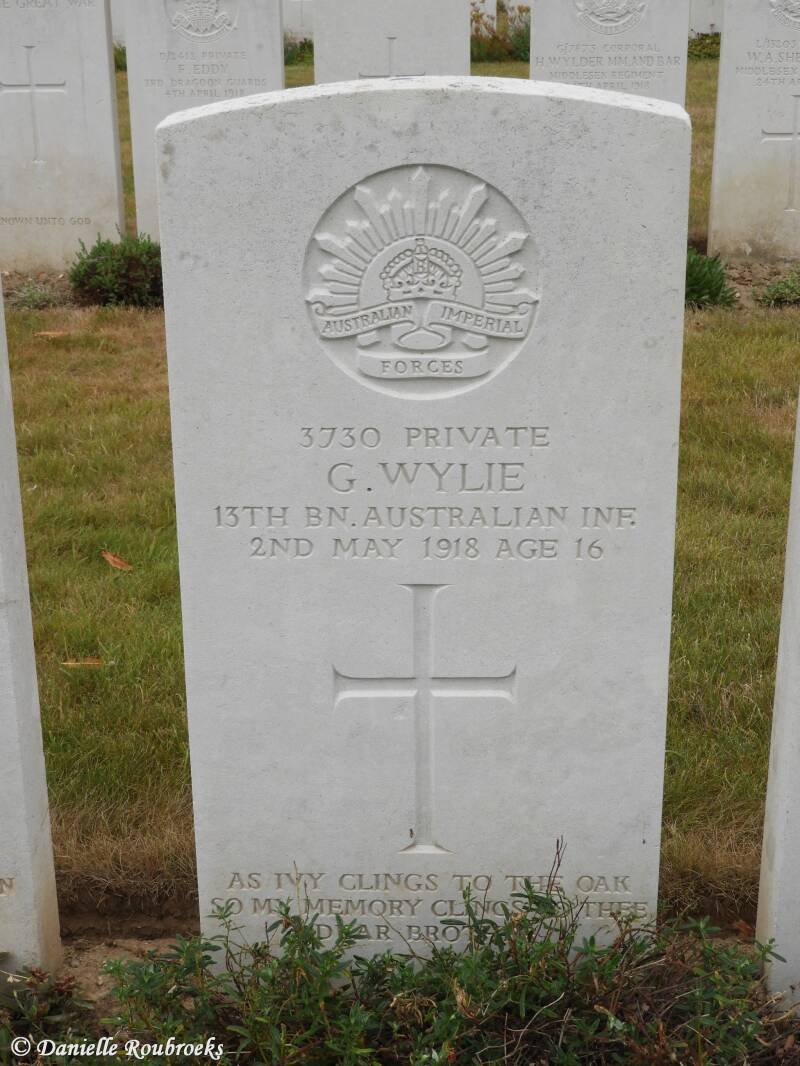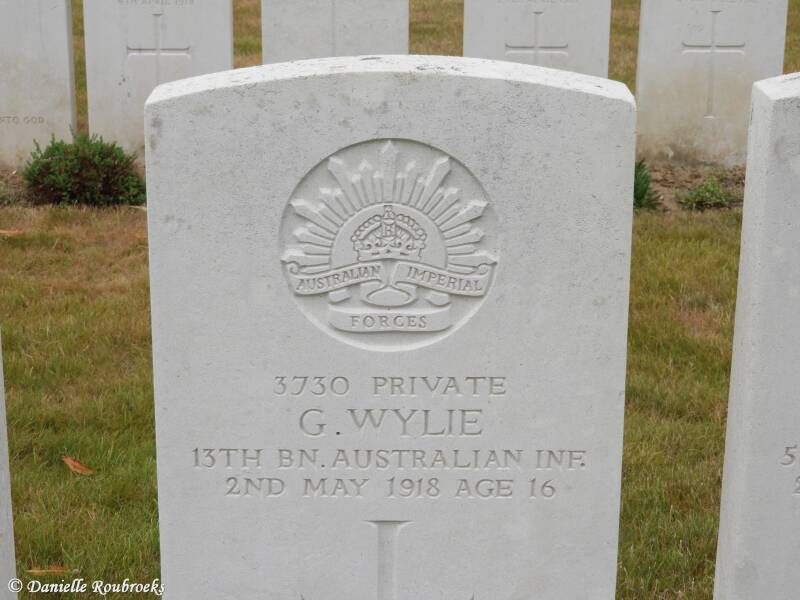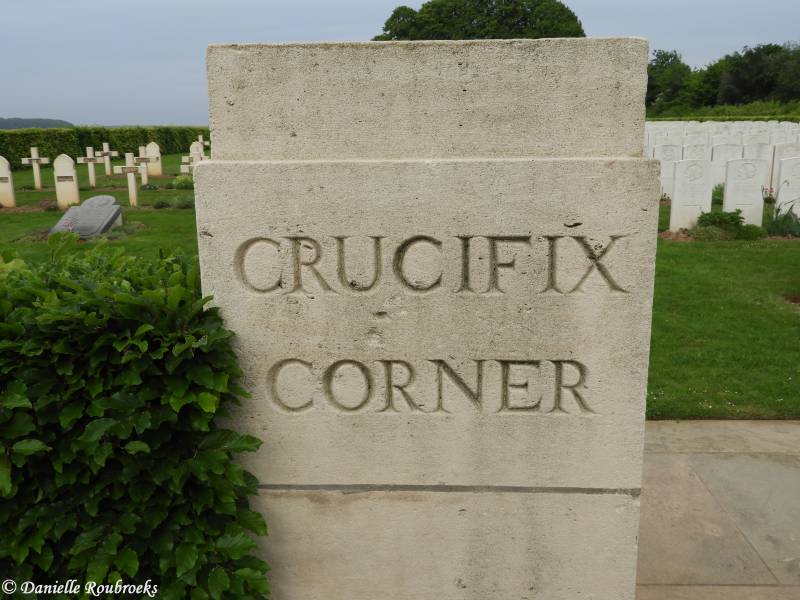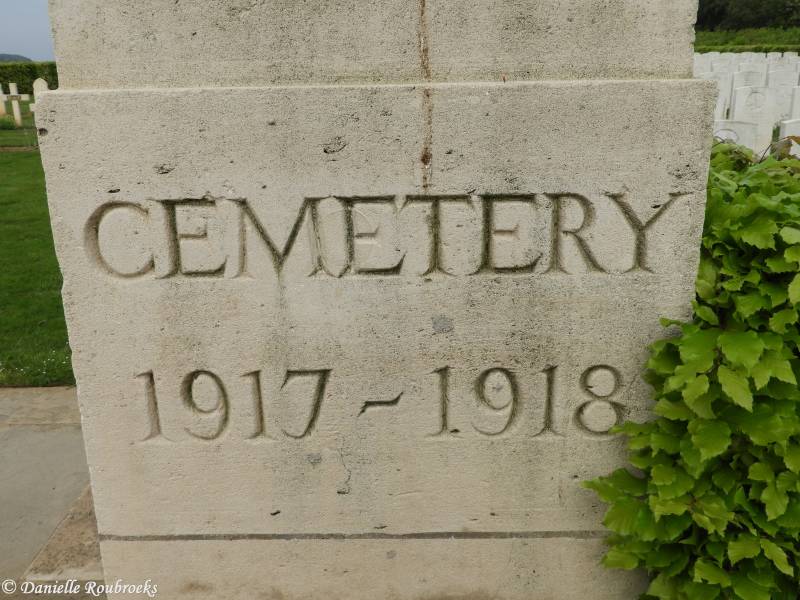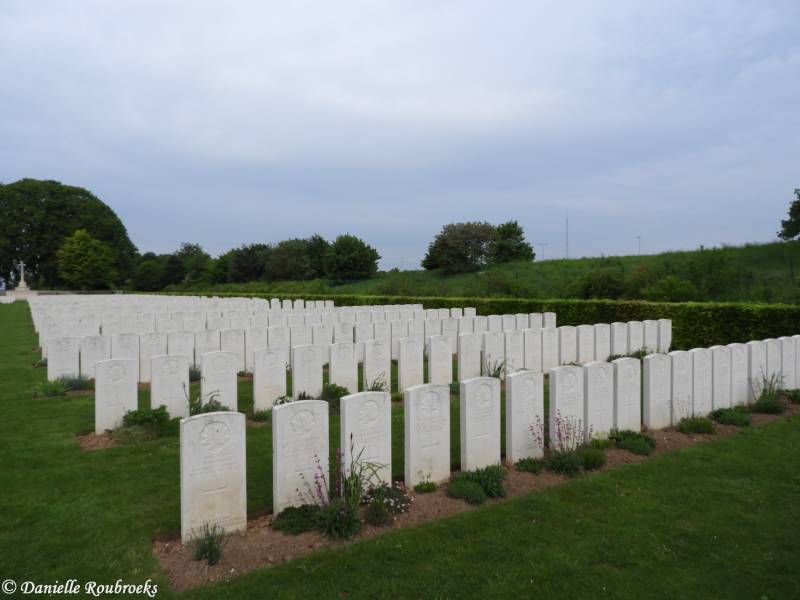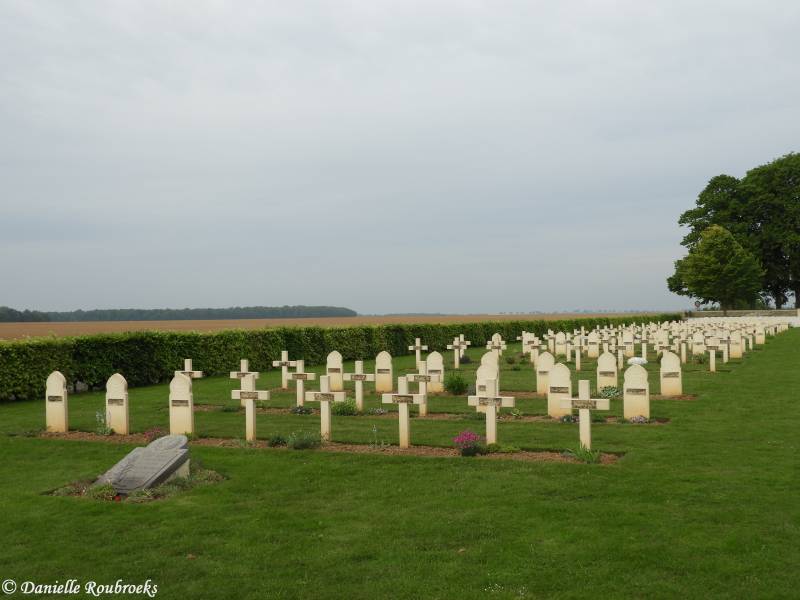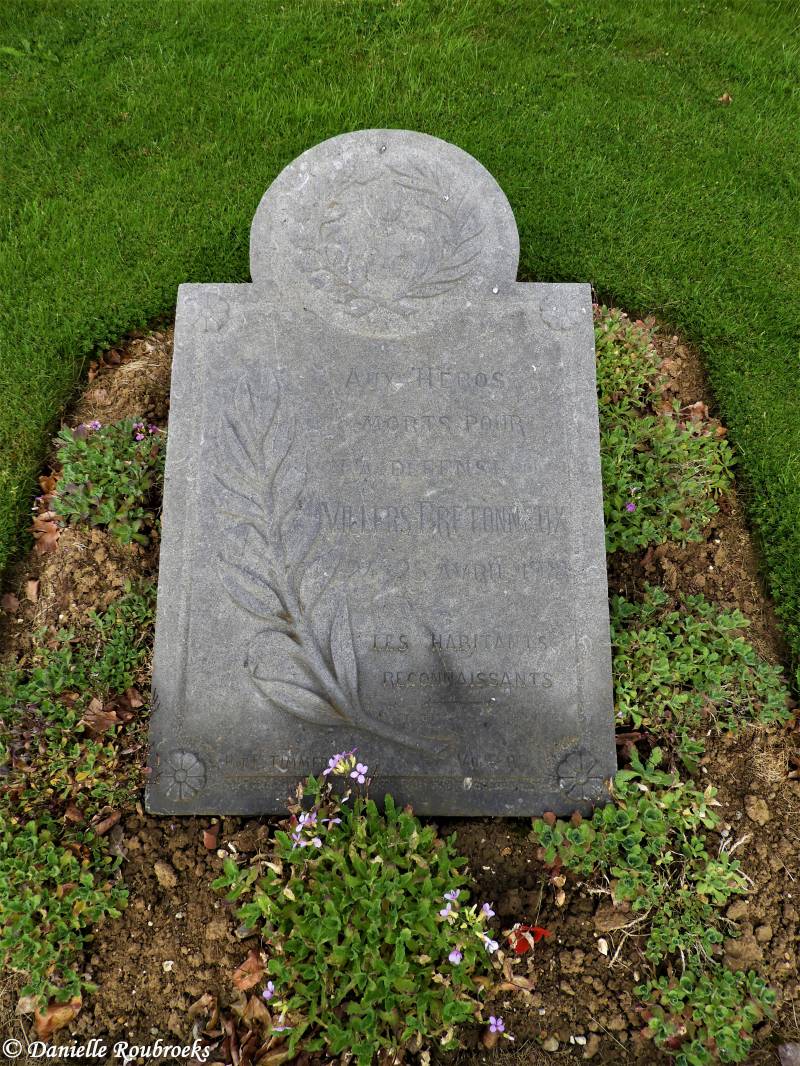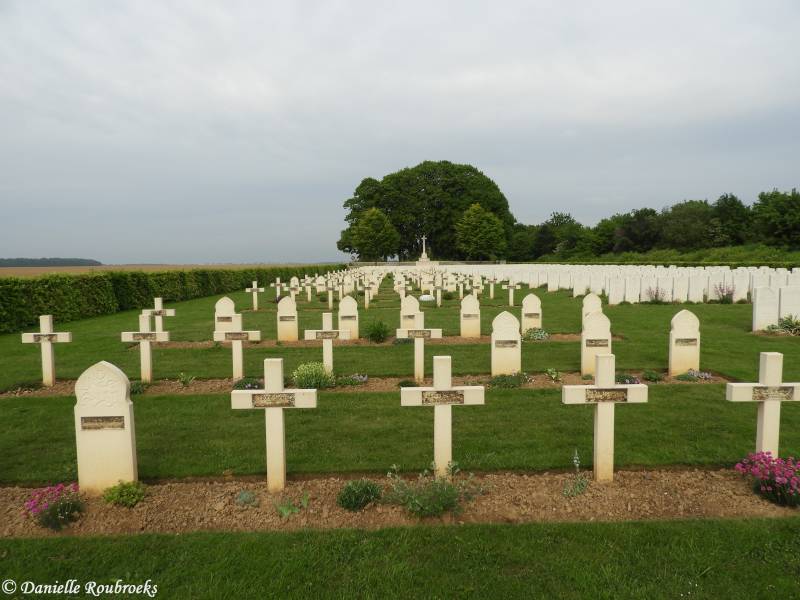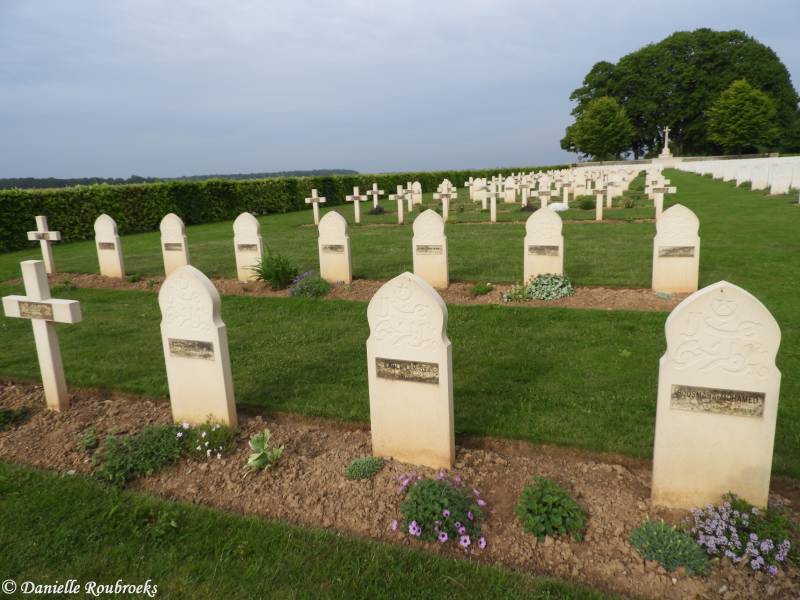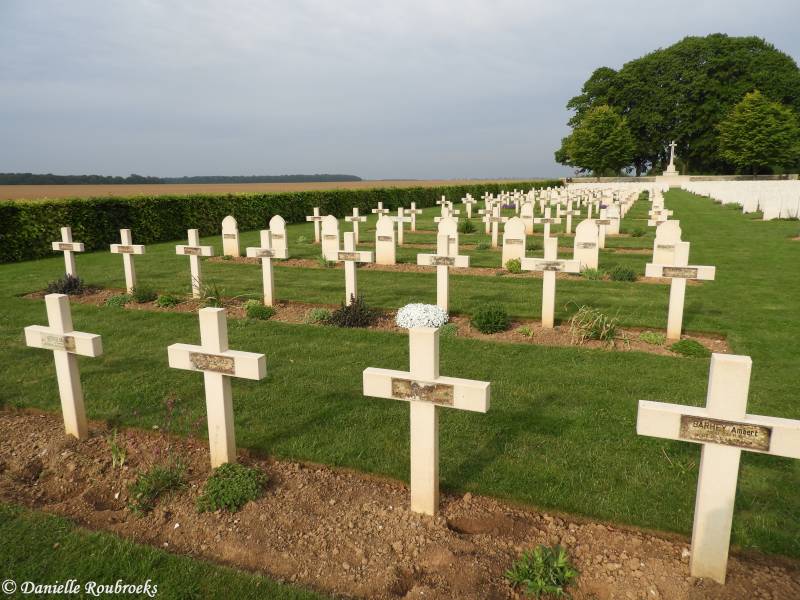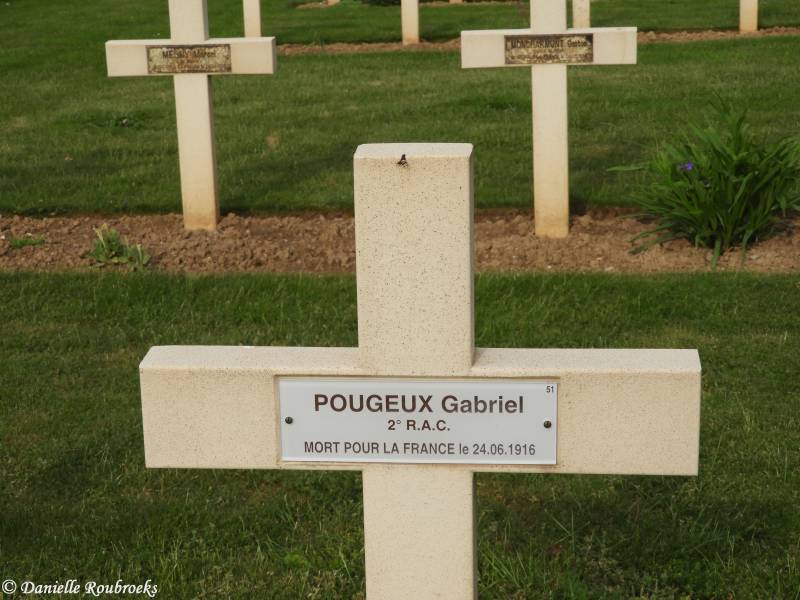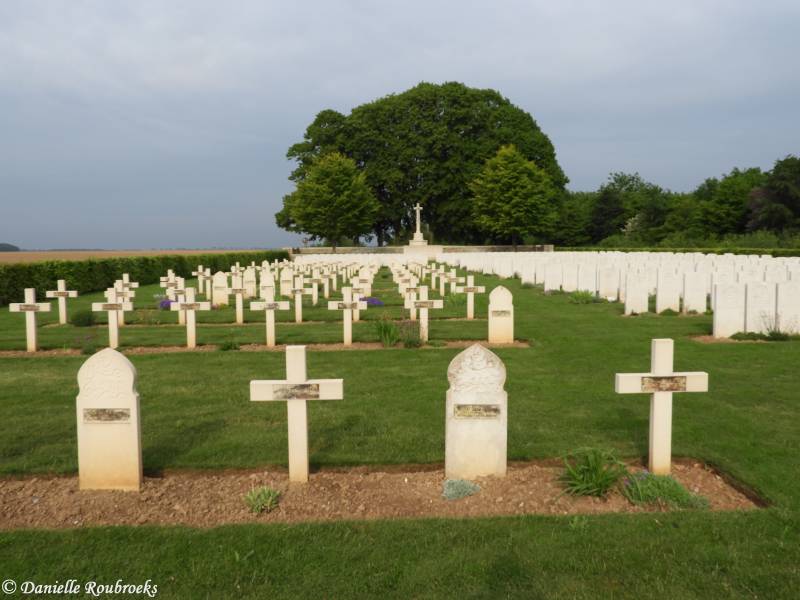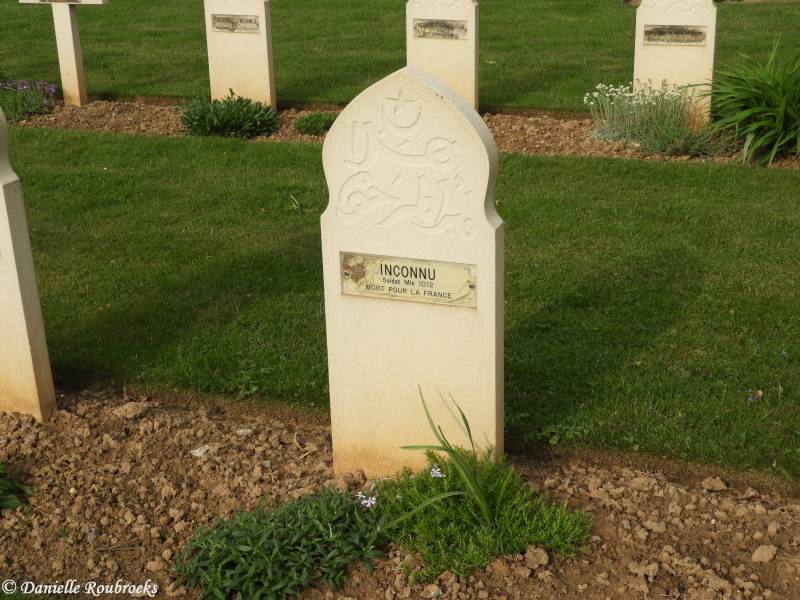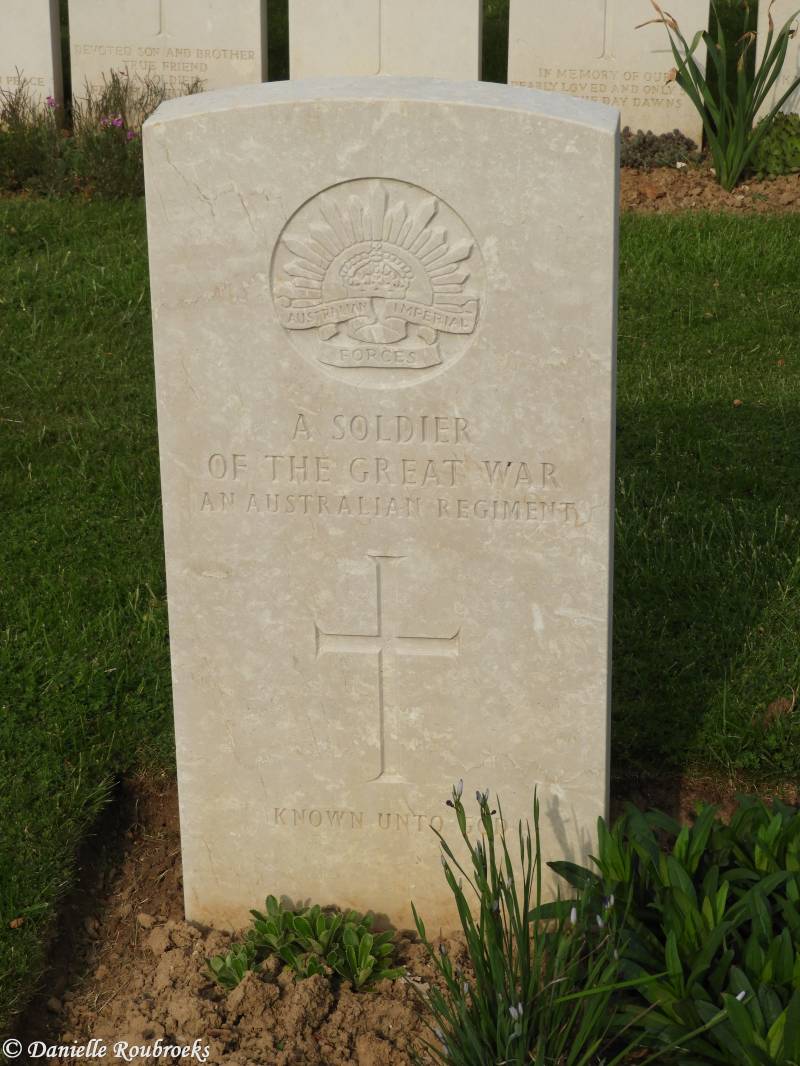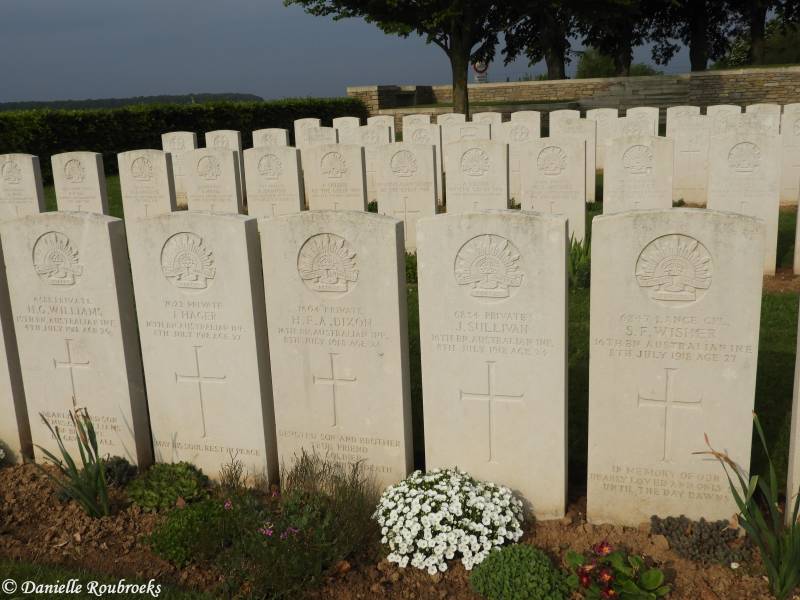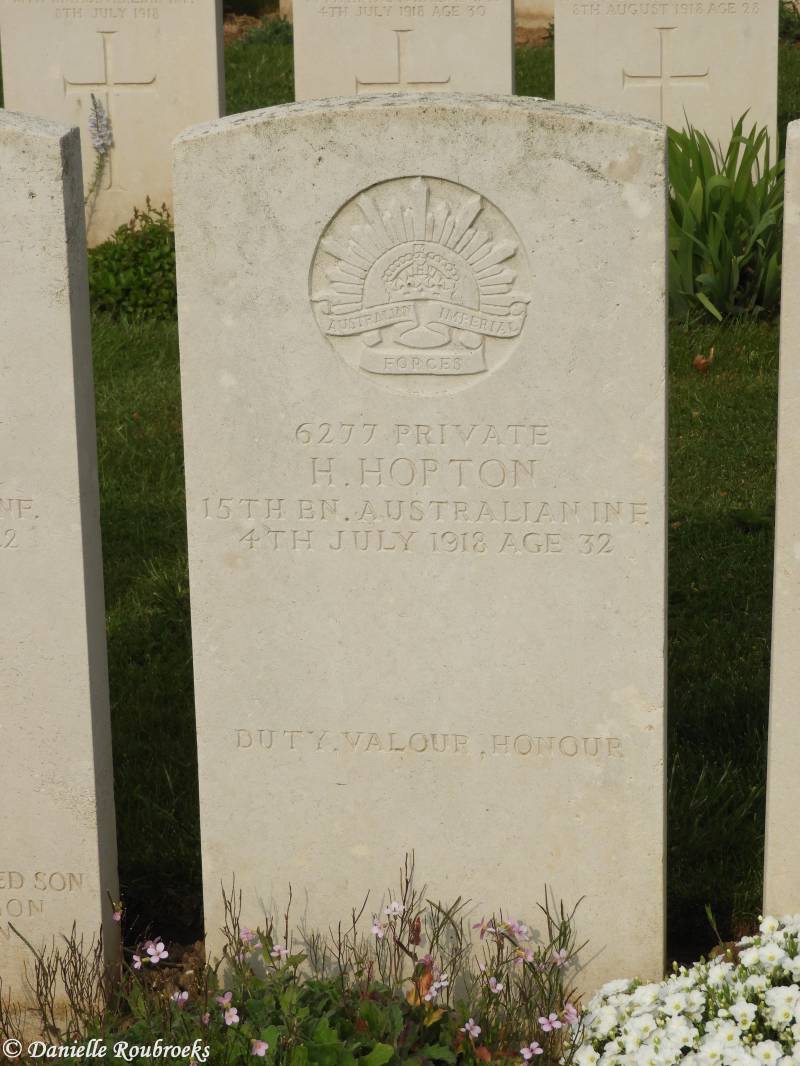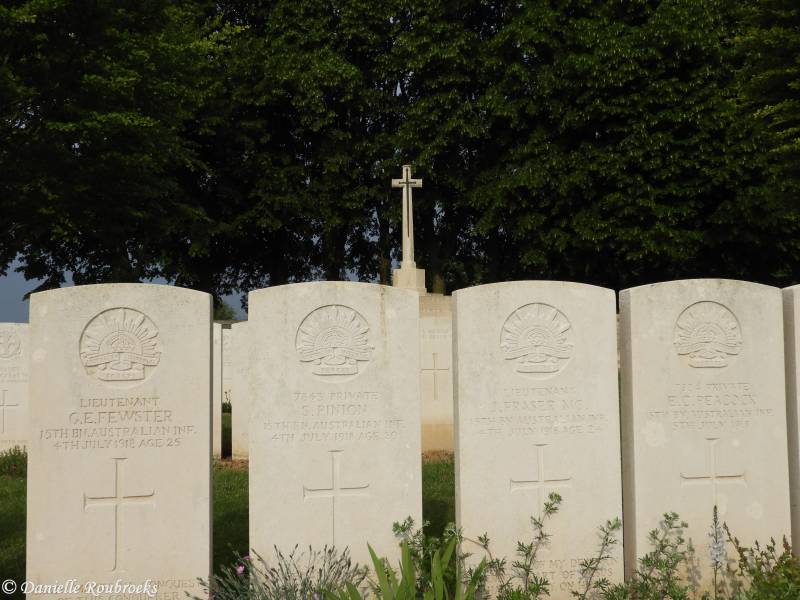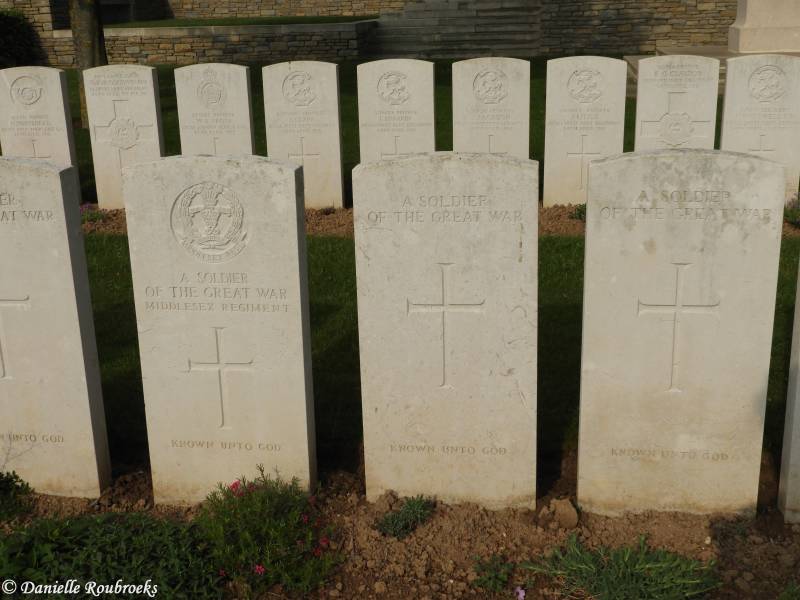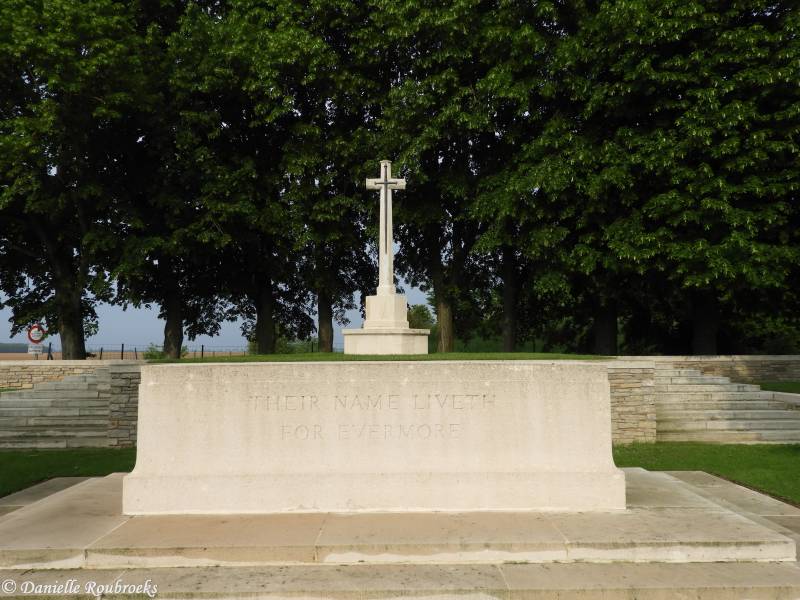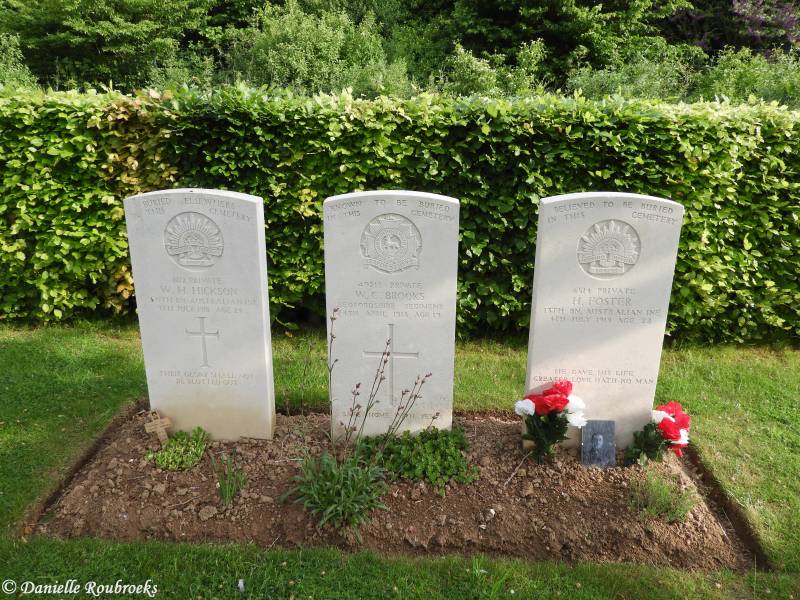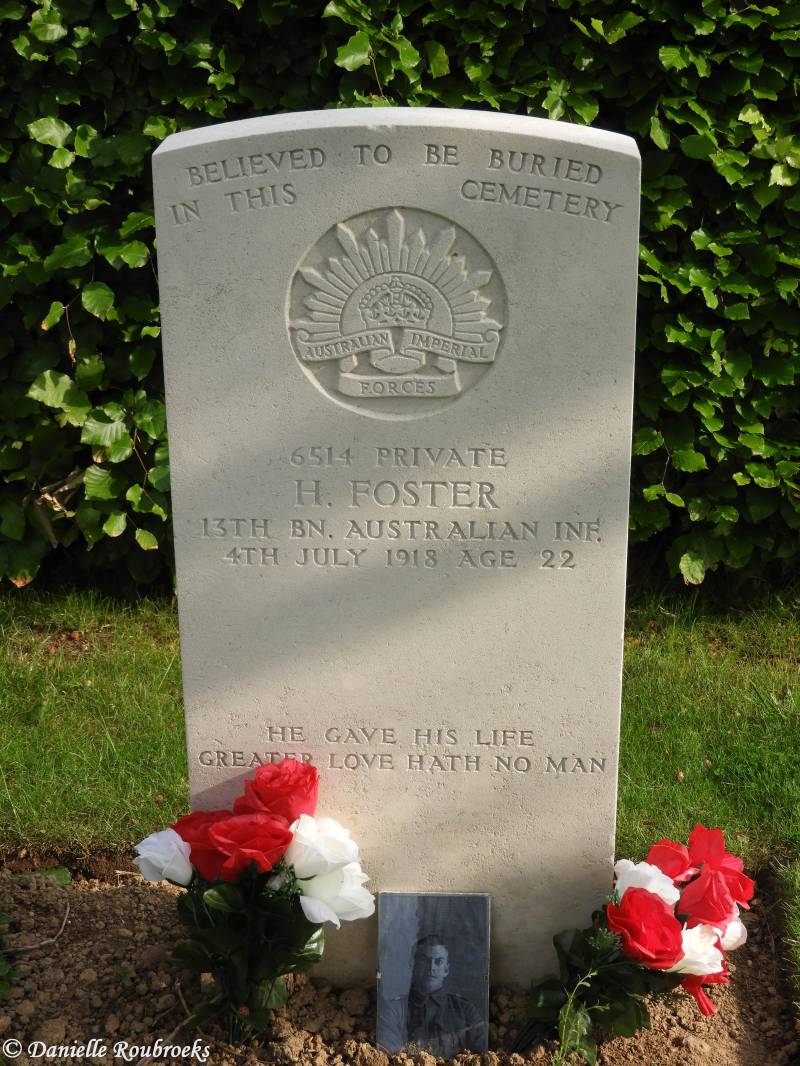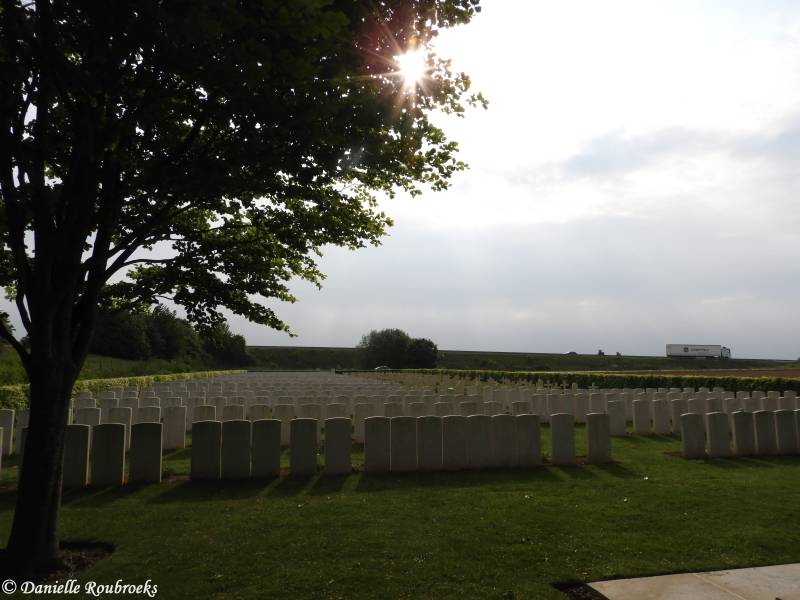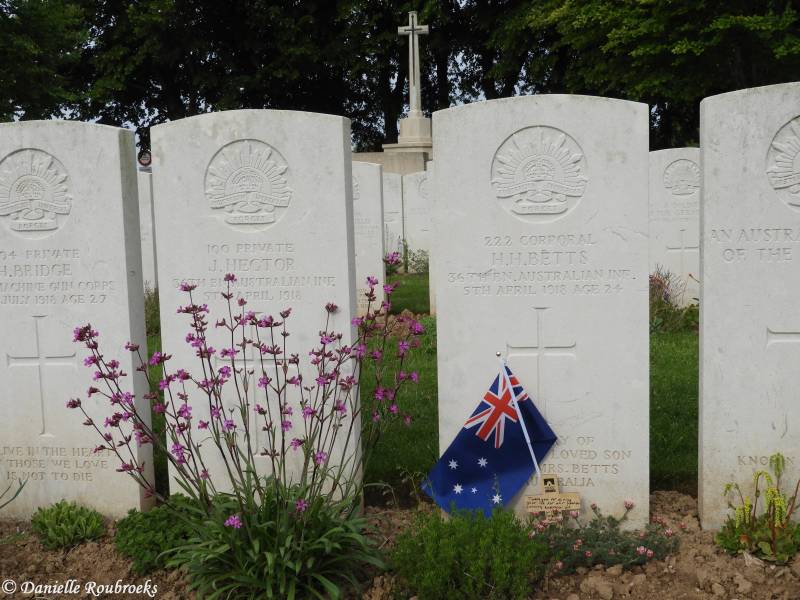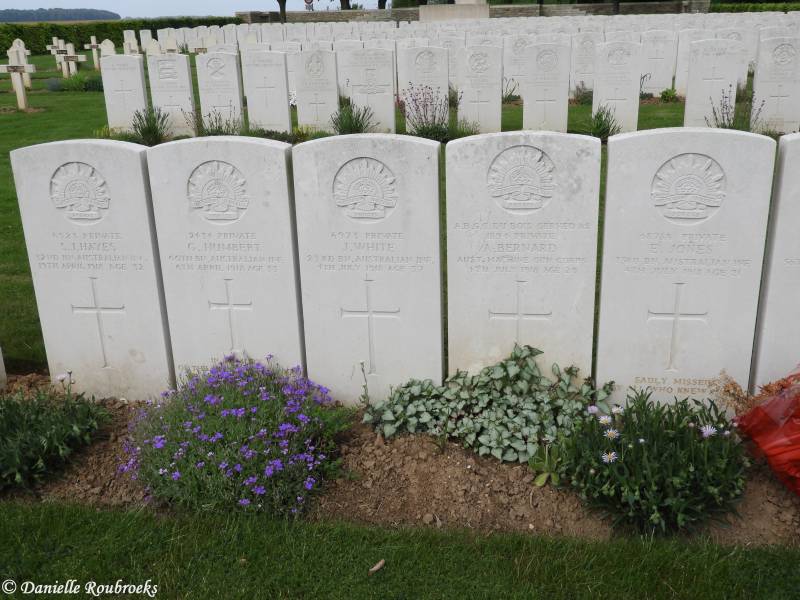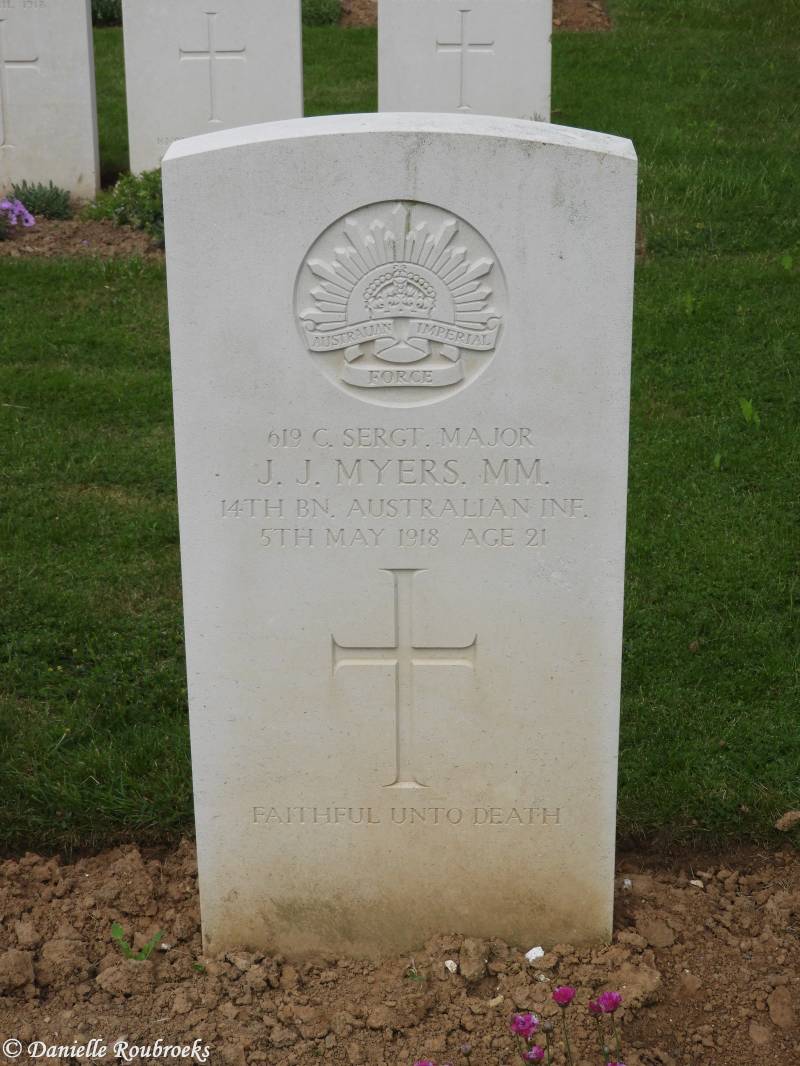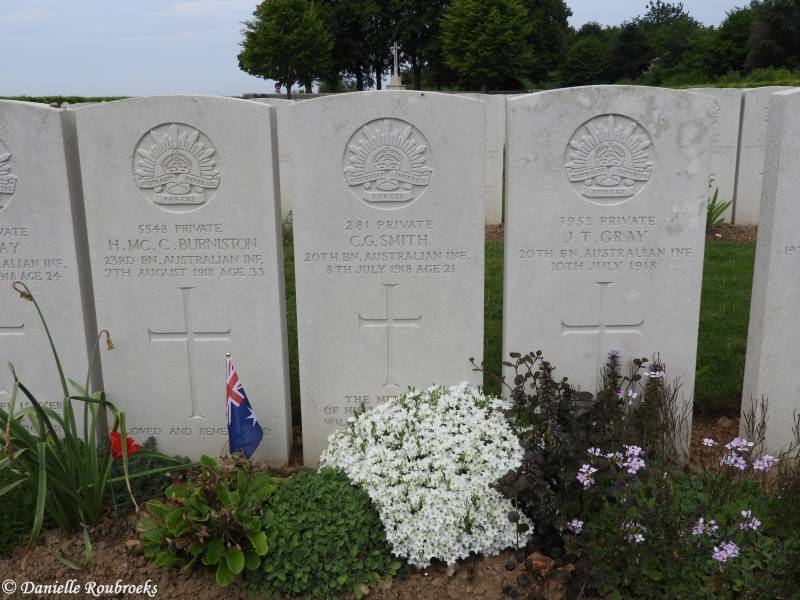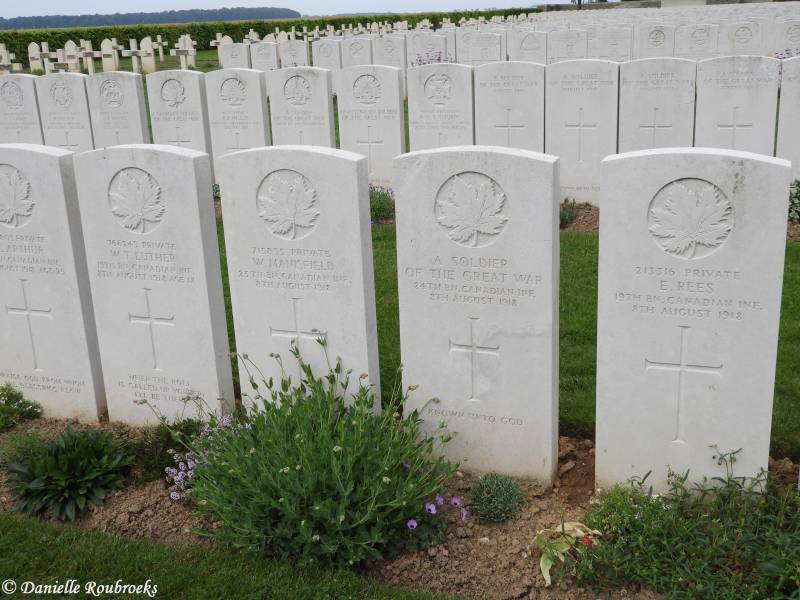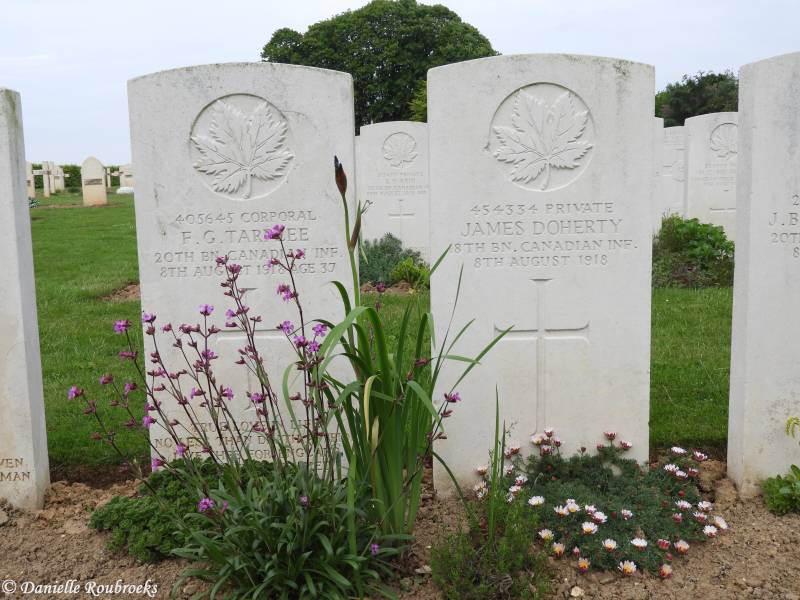Crucifix Corner Cemetery, Villers-Bretonneux
Historical Information (Source: CWGC)
The site became famous in 1918, when the German advance on Amiens ended on 23 April in the capture of Villers-Bretonneux by German tanks and infantry. On the following day the 4th Australian and 5th Australian Divisions, with units of the 8th and 18th Divisions, carried out "an enterprise of great daring", (Sir Douglas Haig's Despatch of 20 July 1918) and recaptured the whole of the village. The cemetery was begun by the Canadian Corps in August 1918 and closed in the same month. The original British Cemetery (now Plot I, Rows A to D) contained 90 burials, and French troops buried in Plot II at the same time. The cemetery was greatly enlarged after the Armistice when graves were brought in from the battlefields between the Somme and the Luce.
Crucifix Corner Cemetery contains 660 Commonwealth burials of the First World War. 191 of the burials are unidentified but there are special memorials to two casualties known or believed to be buried among them. 16 American, 241 French and ten German graves have since been removed to other cemeteries, but 141 French and two Russian burials remain. The cemetery was designed by Sir Edwin Lutyens.
Served with
- Australian (237)
- United Kingdom (164)
- Canadian (70)
- Russian (2)
Served in
- Army (468)
- Air Force (5)
Private Leonard Clarence ISRAEL - 2704 - 20th Bn. Australian Infantry, A.I.F.
Died 11 July 1918 Age 20
Country of Service: Australian
Son of Alfred Robert and Kate Israel, of 105, Glenmore Rd., Paddington, New South Wales.
John William Israel was the first Commonwealth Auditor-General from 1902 to 1926
The Auditor-General for Australia is an independent officer of the Parliament with responsibility under the Auditor-General Act 1997 for auditing Commonwealth entities and reporting to the Australian Parliament. The Auditor-General is supported by the Australian National Audit Office (ANAO).
The office of Auditor-General is a ten year statutory appointment made by the Governor-General on the advice of the Prime Minister. In recognition of the Auditor-General’s status as an officer of the Parliament, the Australian Parliament’s Joint Committee of Public Accounts and Audit (JCPAA) must approve any proposed recommendation for appointment.
Private George WYLIE – 3730 - 13th Bn. Australian Infantry, A.I.F.
Died 02 May 1918 Age 16
Country of Service: Australian
Son of James and Ellen McCabe. Native of Newtown.
Private George Wylie (3730, 13th Battalion) was a school boy from Newtown, NSW, when he enlisted in July 1917. He was killed in action at Villers-Bretonneaux on 2 May 1918, aged 16 years. George’s brother-in-law Private Bruce Gough was awarded a Military Medal




